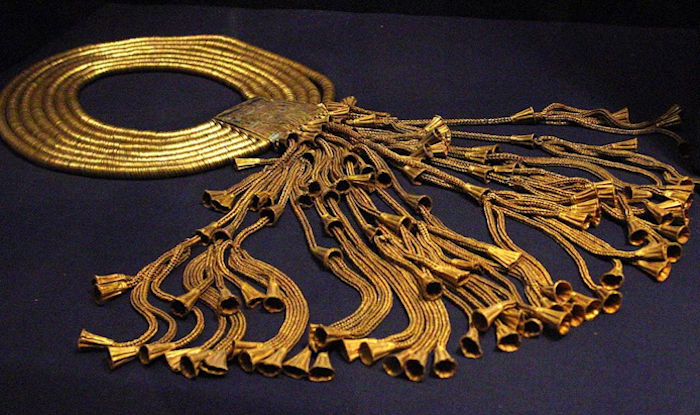Pharaoh Psusennes I Was Buried In The Silver Coffin Decorated With Gold
A. Sutherland - AncientPages.com - Tanis, an ancient area in Egypt's Nile Delta, was an early subject of the archaeologists' interest. The city's name was already well known as Soan (biblical Zoan).
Among many Tanis tombs, one belonged to Psusennes I, the third Pharaoh of the 21st Dynasty who ruled from Tanis between 1047 – 1001 BC.
Outer sarcophagus of the Egyptian King Psusennes' I. Credit: Jerzy Strzelecki - CC BY-SA 3.0
For more than five centuries, looters have plundered most graves of Egyptian pharaohs. One grave, however, was in some way miraculously omitted and it was the tomb of the so-called Silver Pharaoh enshrined in a silver coffin.
The name Psusennes is the Hellenized version, which in Greek means Pasibkhanu or Egyptian Hor-Pasebakhaenniut ("The Star Appearing in the City"), and his throne name was translated to" Great are the Manifestations of Ra, chosen of Amun." Psusennes I was the third king of the Twenty-first Dynasty and is probably the best known of all this Dynasty's kings.
In February 1939, the French archaeologist Pierre Montet (1885 – 1966) and his workers discovered an underground chamber blocked by a stone. It was a tomb consisting of four decorated limestone chambers containing sarcophagi belonging to Osorkon III and Prince Hornakht and the remnants of Takelot II's and Osorkon I's tombs.
In 1940, Montet and his workers continued the excavations at the ancient capital of Tanis and discovered one complete, undisturbed tomb.
Credit: Public Domain and Cairo Museum, Egypt - Compiled by AncientPages.com
The tomb belonged to the 21st Dynasty king Psusennes I and the tombs of the Pharaohs Osorkon I, Takelot II, Sheshonq III, and others in a royal necropolis atop Tanis.
The doorway of the Pharaoh's tomb was found tightly sealed, and in fact, when Montet discovered it, this took six days to shatter it. Finally, the tomb was entered by archaeologists who saw it was "filled with marvels of 1001 knights". It included both beautiful and valuable objects, but at first, there was no sign of any mummy or casket because they were sealed inside a huge stone sarcophagus.
From Psusennes' treasure: a lapis-lazuli necklace of King Psusennes, a 1,8 kg solid gold bracelet, a 8 kg solid gold necklace of Psusenne. Credit: Cairo Egyptian museum via Global Egyptian Museum
The sarcophagus - huge that it almost took all space in the chamber – was found sculpted and decorated with hieroglyphs. The sarcophagus' lid weighed halftone, and there was also additional stone sarcophagus within it, and it was beautifully carved, too.
The archaeologists worked hard additional six days to locate the inner casket finally. The chamber was opened by moving the door block of granite, and in a narrow room, there was enough space for a decorated coffin made of rose granite. At the feet of the sarcophagus stood a canopic jar, which contained the king's internal organs and vessels in gold and silver.
The king's body was covered with precious amulets and semiprecious stones.
Psusennes' mummy - destroyed due to Lower Egypt's moist location - was placed inside a coffin of silver, which was more valuable than gold as it had to be imported to Egypt.
The jewelry and other grave goods survived in perfect condition. The coffin was then placed in a black granite sarcophagus, which was in turn placed in a red granite outer sarcophagus.
Gold and lapis lazuli collar of Psusennes I, Cairo Museum. Credit: tutincommon (John Campana) - CC BY 2.0
Especially notable amongst the items discovered in the tomb was Psusennes' solid gold mask, which was found completely intact.
The mask – considered one of the treasure masterpieces - was made of gold and lapis lazuli and held inlays of black and white glass for the eyes and eyebrows of the object. It has a maximum width and height of 38 cm and 48 cm, respectively.
Archaeologists discovered that the Pharaoh's "fingers and toes had been encased in gold stalls, and he was buried with gold sandals on his feet. The finger stalls are the most elaborate ever found, with sculpted fingernails. Each finger wore an elaborate ring of gold and lapis lazuli or some other semiprecious stone.
The intact tomb of Pharaoh Psusennes I can only be compared to Tutankhamun's, and it testifies Psusennes I had a rich funeral.
Updated on February 12, 2022
Written by – A. Sutherland AncientPages.com Staff Writer
Copyright © AncientPages.com All rights reserved. This material may not be published, broadcast, rewritten or redistributed in whole or part without the express written permission of AncientPages.com
Expand for referencesMore From Ancient Pages
-
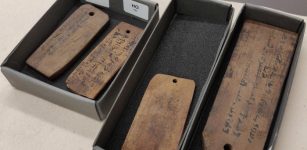 Scientists Reconstruct The Climate Of The Ancient World Using Small Wooden Artifacts And Mummies
Archaeology | Apr 5, 2023
Scientists Reconstruct The Climate Of The Ancient World Using Small Wooden Artifacts And Mummies
Archaeology | Apr 5, 2023 -
 DNA Unravels Mysteries Of The Crannogs, Ancient Artificial Islands Older Than Stonehenge
Archaeology | Oct 10, 2022
DNA Unravels Mysteries Of The Crannogs, Ancient Artificial Islands Older Than Stonehenge
Archaeology | Oct 10, 2022 -
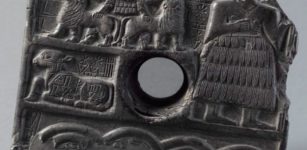 Votive Plaque Dedicated To Dudu High Priest Of God Ningirsu
Artifacts | Jan 16, 2017
Votive Plaque Dedicated To Dudu High Priest Of God Ningirsu
Artifacts | Jan 16, 2017 -
 Mysterious Moon-Eyed People – Ancient Subterranean Race In Conflict With The Cherokee
Featured Stories | Dec 28, 2017
Mysterious Moon-Eyed People – Ancient Subterranean Race In Conflict With The Cherokee
Featured Stories | Dec 28, 2017 -
 Evidence Reveals Ancient Saudi Arabia Had A Complex, Thriving Society, Contradicting Notions Of A Struggling Population In Barren Lands
Featured Stories | Aug 21, 2024
Evidence Reveals Ancient Saudi Arabia Had A Complex, Thriving Society, Contradicting Notions Of A Struggling Population In Barren Lands
Featured Stories | Aug 21, 2024 -
 7,000-Year-Old Ibex Remains Found Under The Ice In Italy Are 1,700 Years Older Than Ötzi!
Archaeology | Dec 14, 2022
7,000-Year-Old Ibex Remains Found Under The Ice In Italy Are 1,700 Years Older Than Ötzi!
Archaeology | Dec 14, 2022 -
 Edøy Discovery: Traces Of 1,000-Year-Old Ship Burial Detected In Norway
Archaeology | Nov 24, 2019
Edøy Discovery: Traces Of 1,000-Year-Old Ship Burial Detected In Norway
Archaeology | Nov 24, 2019 -
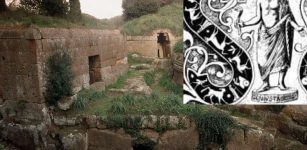 Tages: Etruscan Prophet Who Revealed Sacred Knowledge Before He Vanished
Featured Stories | Mar 1, 2016
Tages: Etruscan Prophet Who Revealed Sacred Knowledge Before He Vanished
Featured Stories | Mar 1, 2016 -
 Mysterious Location Of The Amazing Land Of Punt – Can This Puzzle Be Solved One Day?
Featured Stories | Jul 18, 2016
Mysterious Location Of The Amazing Land Of Punt – Can This Puzzle Be Solved One Day?
Featured Stories | Jul 18, 2016 -
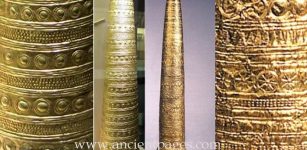 Mystery Of 3,000-Year-Old Conical Hats – Was It A Highly Advanced Device?
Artifacts | Jun 20, 2020
Mystery Of 3,000-Year-Old Conical Hats – Was It A Highly Advanced Device?
Artifacts | Jun 20, 2020 -
 Tragic Reign Of Caterina Cornaro – The Last Queen Of Cyprus And Patron Of The Arts
Featured Stories | Jul 4, 2019
Tragic Reign Of Caterina Cornaro – The Last Queen Of Cyprus And Patron Of The Arts
Featured Stories | Jul 4, 2019 -
 Coyote – Native American Trickster, Creator, And Sacred Animal Who Can Deceive But Also Give Wisdom
Featured Stories | Apr 28, 2017
Coyote – Native American Trickster, Creator, And Sacred Animal Who Can Deceive But Also Give Wisdom
Featured Stories | Apr 28, 2017 -
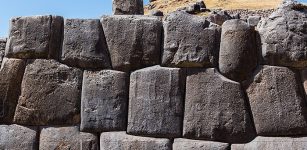 30,000-Year-Old Hidden Writing Found At Sacsayhuamán Temple Could Re-Write History
Civilizations | Jun 24, 2014
30,000-Year-Old Hidden Writing Found At Sacsayhuamán Temple Could Re-Write History
Civilizations | Jun 24, 2014 -
 ‘Impossible’ Advanced Ancient Technology In Mesopotamia – Evidence Of Other-Worldly Interaction?
Ancient Mysteries | May 24, 2021
‘Impossible’ Advanced Ancient Technology In Mesopotamia – Evidence Of Other-Worldly Interaction?
Ancient Mysteries | May 24, 2021 -
 Paleolithic Inhabitants Of Cyprus Established Settlements Much Earlier Than Previously Estimated
Archaeology | May 17, 2024
Paleolithic Inhabitants Of Cyprus Established Settlements Much Earlier Than Previously Estimated
Archaeology | May 17, 2024 -
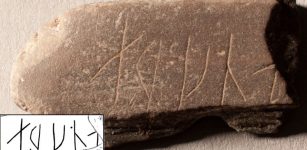 Puzzling Runic Inscription Dated To 1050-1500 AD Unearthed In Oslo, Norway
Archaeology | Dec 13, 2017
Puzzling Runic Inscription Dated To 1050-1500 AD Unearthed In Oslo, Norway
Archaeology | Dec 13, 2017 -
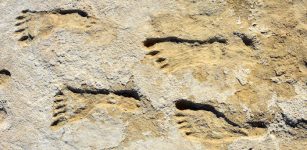 There Is A Problem With The Footprints Claimed As Evidence Of Ice Age Humans In North America – Scientists Say
Archaeology | Nov 16, 2022
There Is A Problem With The Footprints Claimed As Evidence Of Ice Age Humans In North America – Scientists Say
Archaeology | Nov 16, 2022 -
 Rock Stars: How A Group Of Scientists In South Africa Rescued A Rare 500 Kg Chunk Of Human History
Featured Stories | Oct 20, 2022
Rock Stars: How A Group Of Scientists In South Africa Rescued A Rare 500 Kg Chunk Of Human History
Featured Stories | Oct 20, 2022 -
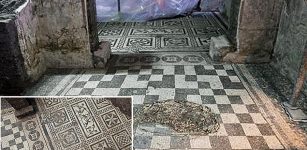 Ancient Roman ‘Commander House’ Discovered In Rome
Archaeology | Mar 5, 2018
Ancient Roman ‘Commander House’ Discovered In Rome
Archaeology | Mar 5, 2018 -
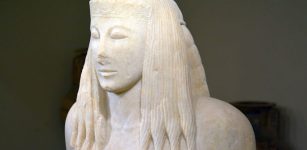 ‘Supernatural’ Sized Daughter Of Thera: Rare Masterpiece Of Greek Antiquity Revealed To The Public
Artifacts | Oct 1, 2022
‘Supernatural’ Sized Daughter Of Thera: Rare Masterpiece Of Greek Antiquity Revealed To The Public
Artifacts | Oct 1, 2022




